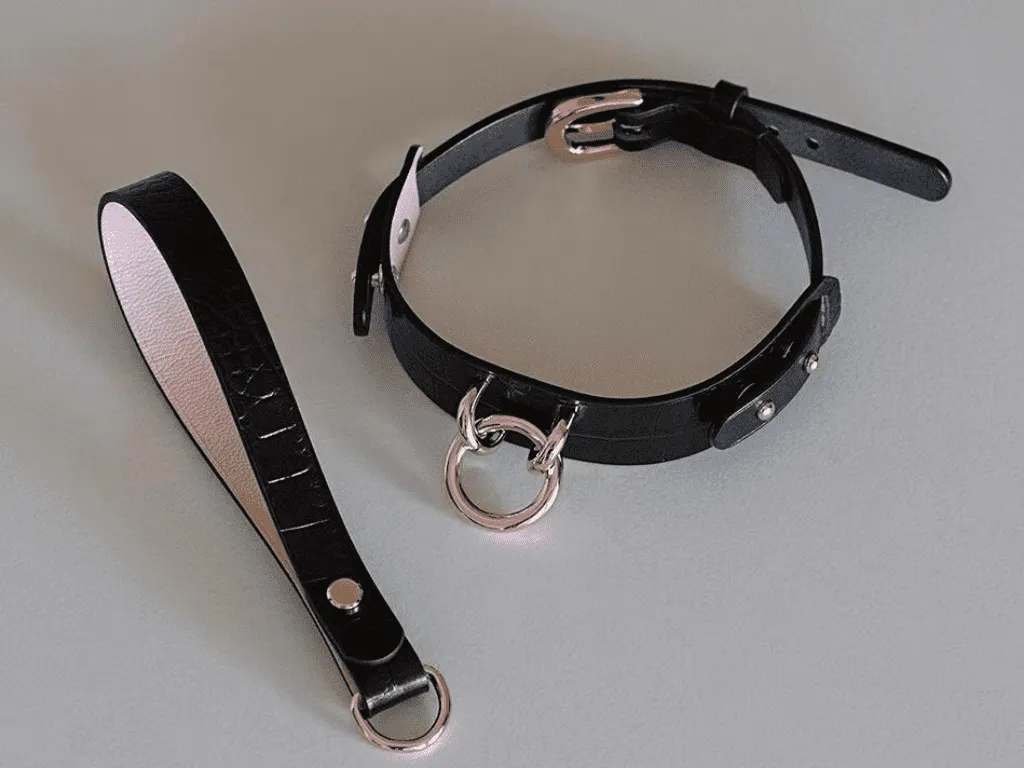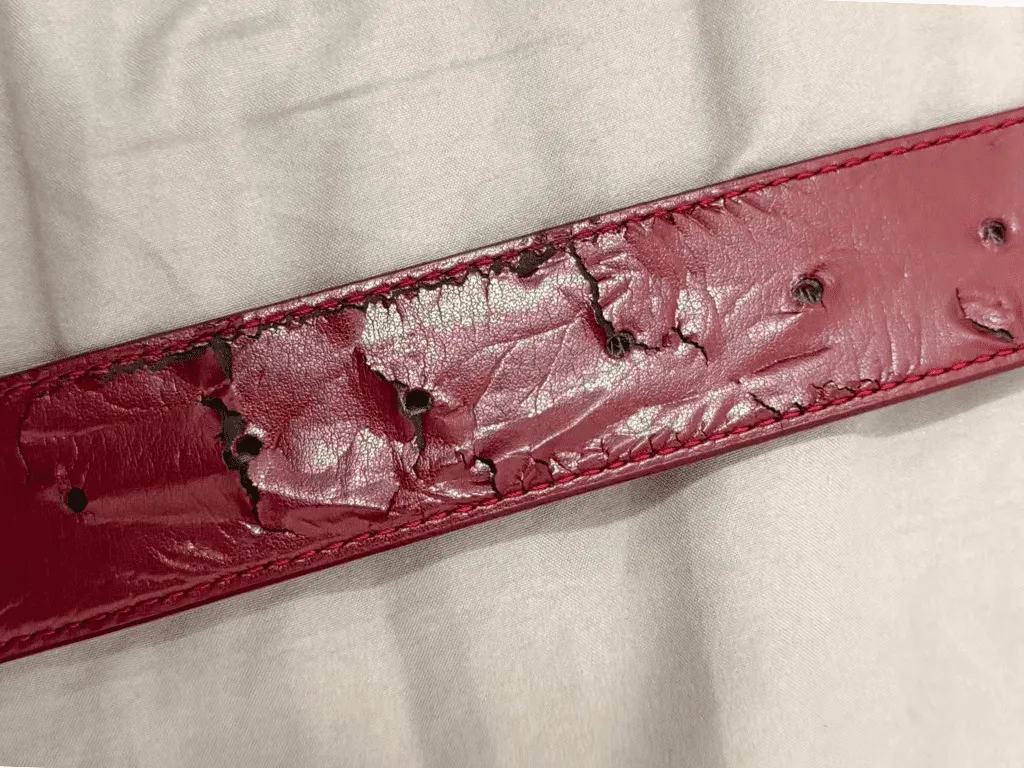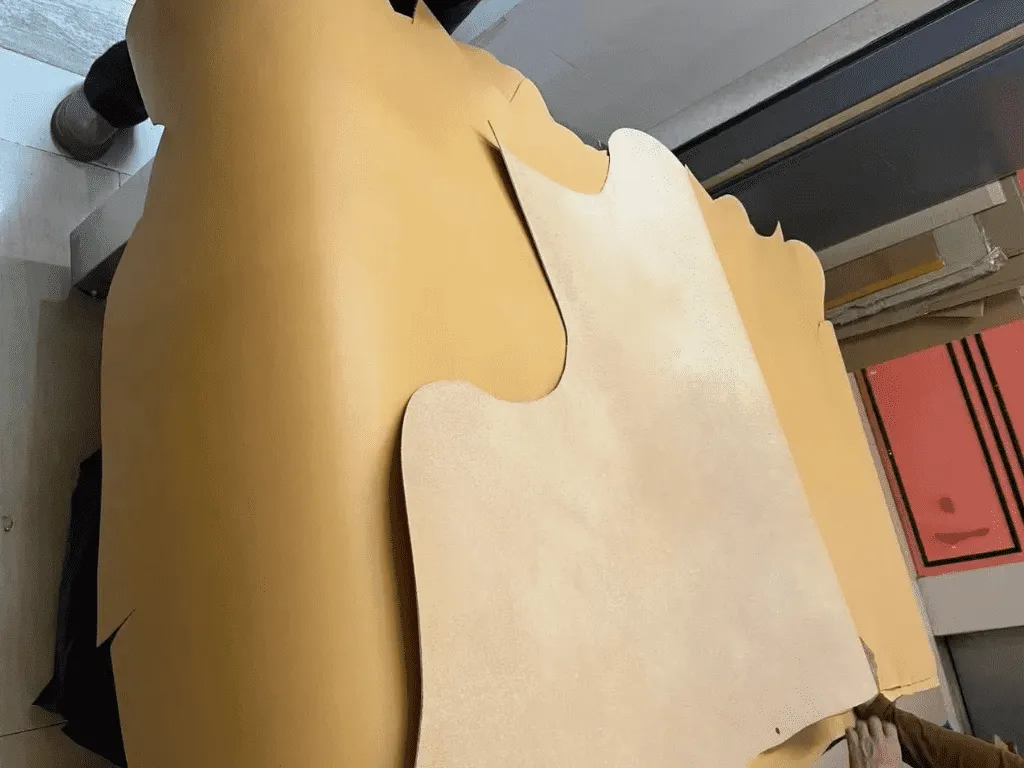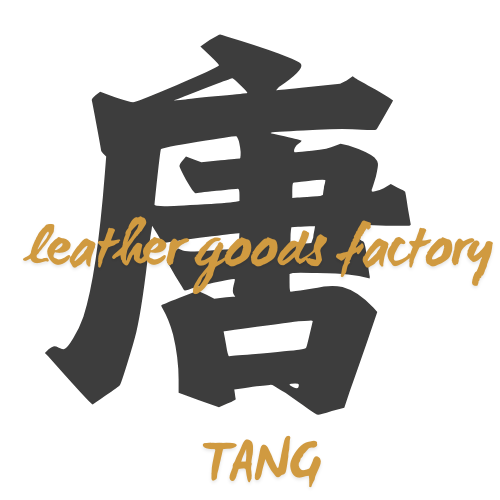Over the years, bondage gear has become a popular product, and you can find them made from many different materials, like PU, microfiber leather, split leather, and top-grain leather. As a salesperson with eight years of experience, I strongly advise against using PU or any leather priced under $3 per square foot for restraints.
These low-cost materials can’t compare to high-quality top-grain leather in terms of chemical coatings or durability. This can significantly hurt the user’s experience. Restraints are very personal and private products, so quality is the most important factor for a great experience.
Based on my years of sales and factory production experience, here is a guide on how to choose the right leather for bondage gear.


PU and Vegan Leather: What to Avoid
PU (Polyurethane) is a man-made material. It has advantages in price and has a low waste rate, as it can be produced without any flaws. However, its downsides are very clear:
- It ages quickly.
- It lacks durability.
- It is prone to having high levels of chemicals.
Vegan leather is also a synthetic product, but it is made from plant fibers. While it contains some natural plant components, its surface texture and color are created using a large amount of chemicals. The texture and fiber on the back of high-quality microfiber can look very similar to real leather, but it can’t replace the real thing. It has the same problems as PU:
- Limited texture and style options.
- Poor durability.
- High levels of chemicals.


The Best Choice: Genuine Leather
After discussing the above, is real leather the best choice? Yes and no. There are many different types of real leather, including split leather, bridle leather, vegetable-tanned leather, and others.
Split leather is a form of genuine leather, but it has a surface finish similar to PU. It’s called “split leather” because it’s the second layer of the hide after the top layer is split off. The first layer of split leather is made by crushing and re-compressing low-grade animal fibers, and the second layer is a chemical coating that adds color and texture.
Bridle leather was originally created for horse riding, so it offers excellent comfort and durability. This type of leather usually keeps its natural texture and isn’t overly dyed. During production, it doesn’t need any extra backing to increase its durability, unless a customer asks for a softer feel or other special requirements.
Vegetable-tanned leather is very similar to bridle leather and is my personal favorite. It has a beautiful, natural, vintage feel and a pleasant, earthy scent. Vegetable tanning is one of the oldest and most traditional methods. It uses natural tannins from plant matter like tree bark and leaves and can take weeks or months. This process is environmentally friendly and doesn’t use harsh chemicals, unlike chrome tanning.
Both bridle leather and vegetable-tanned leather are completely eco-friendly and safe. Other top-grain leathers, such as Lychee leather and Nappa leather, are also great choices. When sourcing these leathers in China, you can specifically request that they pass European safety standards. Although these materials are more expensive than regular leather, the extra cost is worth it for the peace of mind. A product that isn’t safe is worthless, no matter how cheap it is.
To summarize, I highly recommend using natural materials like bridle leather and vegetable-tanned leather. Based on my experience, while new materials and designs appear all the time, the products that have the longest-lasting success are those that are simple, natural, and durable.


| Durability | Chemicals | Price waste rate | |
| PU | Low | High | Low Low |
| Vegan leather | Low | High | Low Low |
| Split-leather | Medium | High | Medium Medium |
| Bridle leather | High | Low | High High |
| Vegetable-tanned leather | High | Low | High High |
If you are looking to produce your own restraints, feel free to contact us. We believe we can offer you some practical and useful advice.



